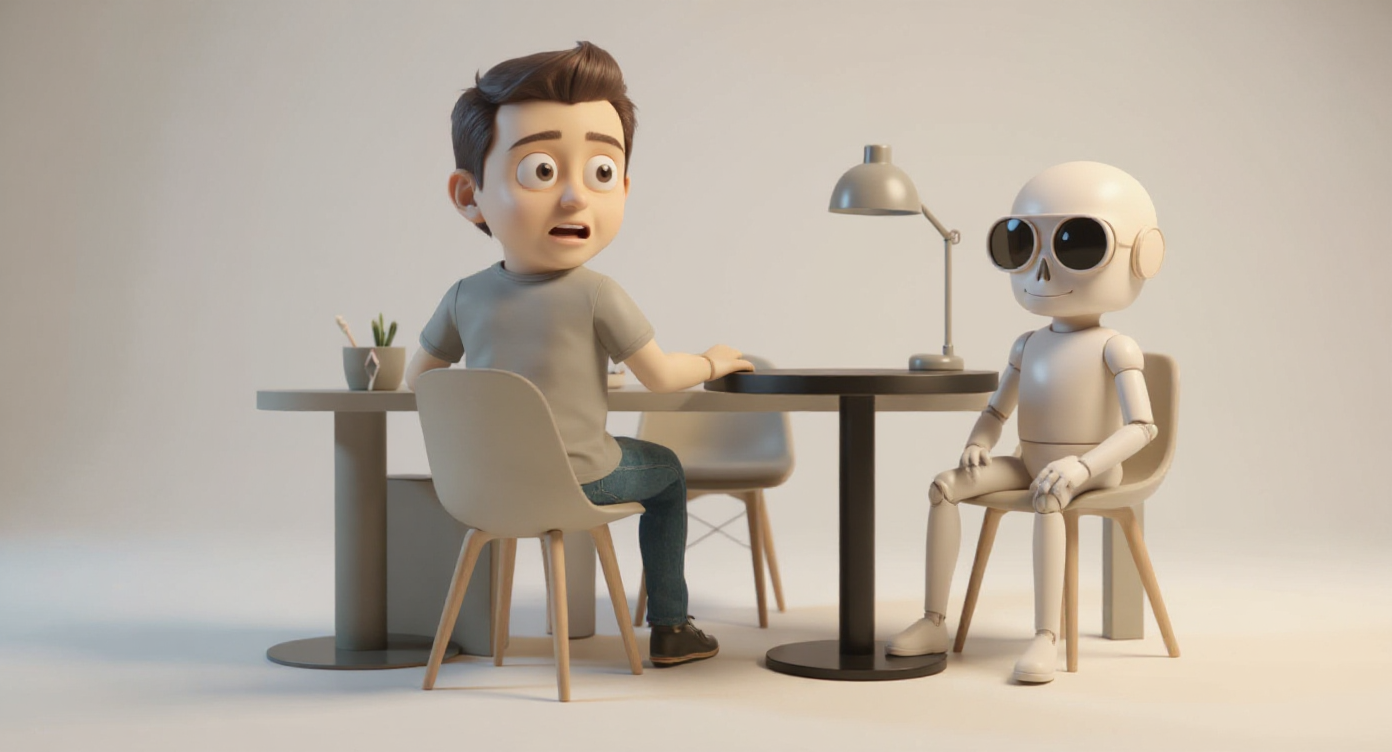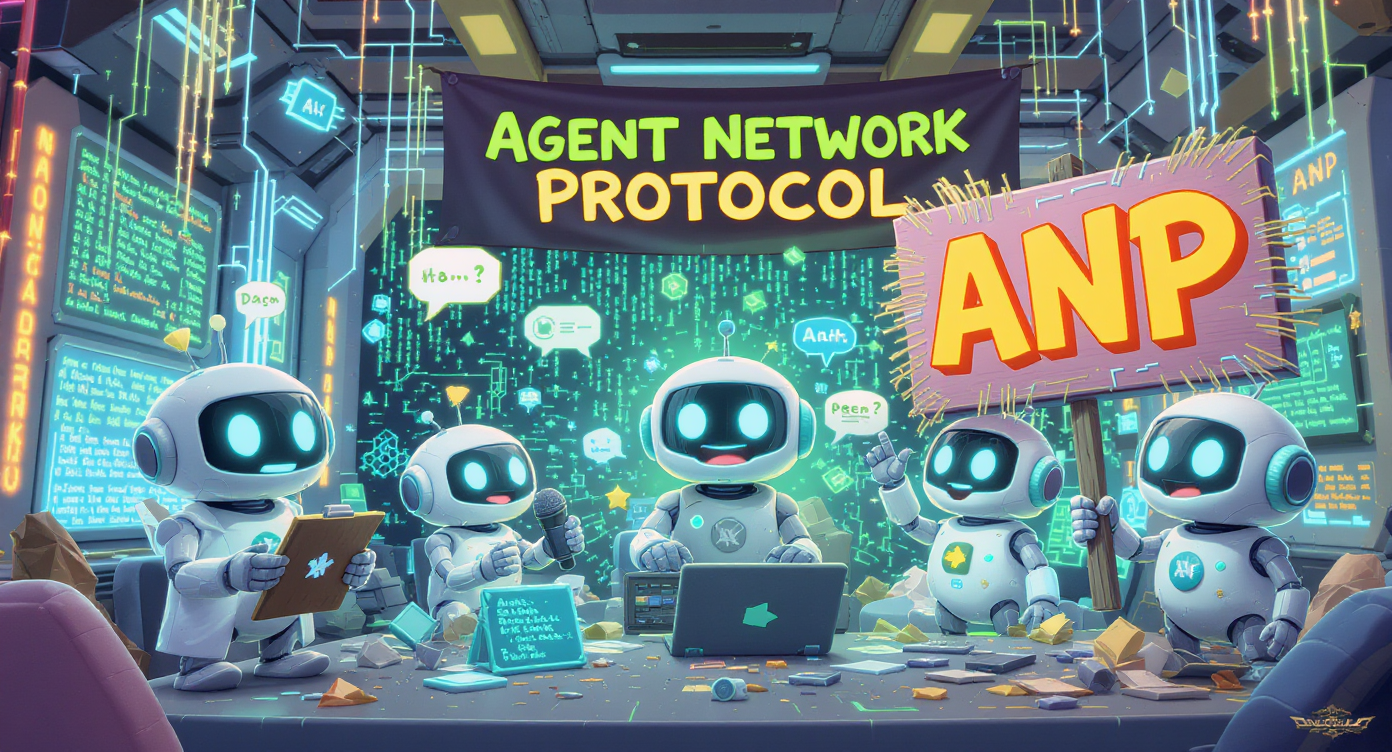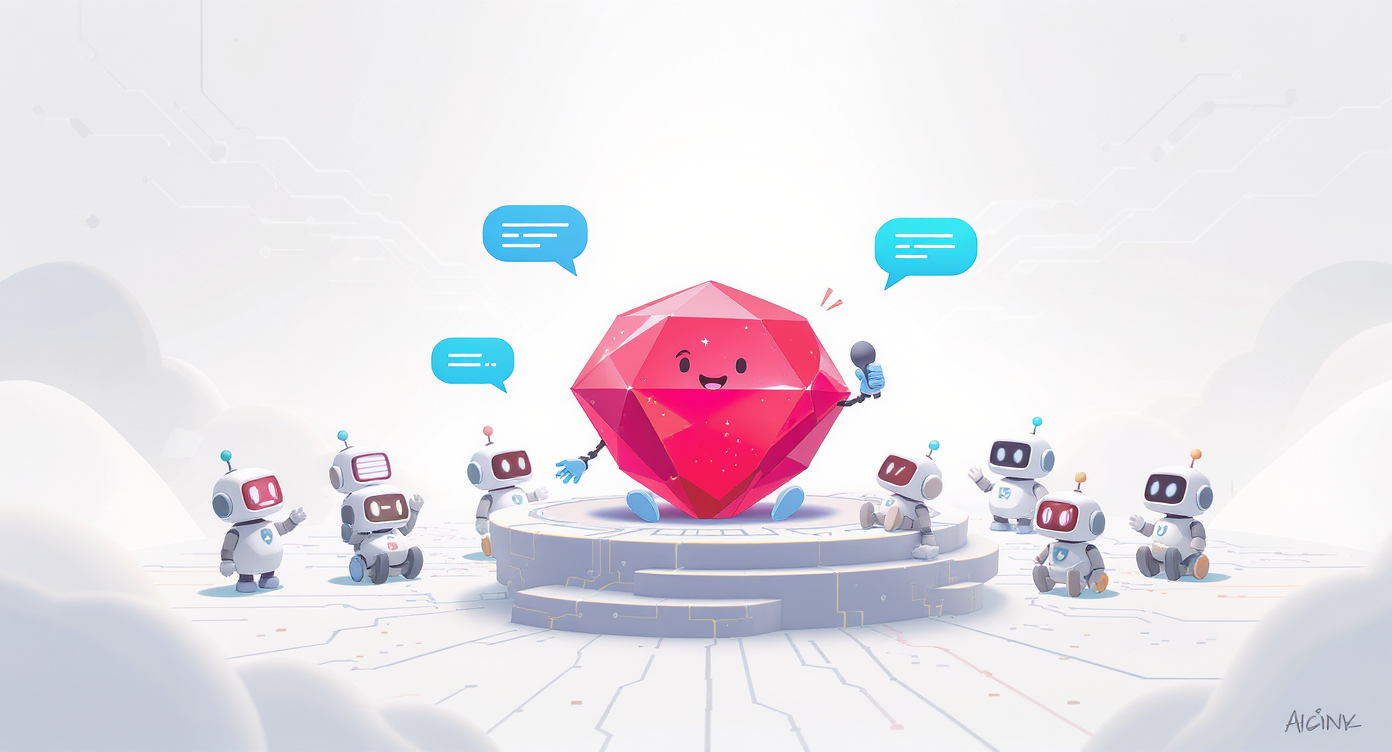| 🌐 Read this post in: English | Español | Deutsch |
AI vs. Your Job Search: Frenemies in the Workplace
Every few months, headlines scream: “Robots are coming for your jobs!” Meanwhile, LinkedIn gurus chirp about how AI will give us a four-day workweek and all the free time in the world to pursue pottery or goat yoga.
Reality check? Neither side is totally right. AI isn’t bringing an apocalypse, but it’s not just handing us margaritas either. Instead, it’s fundamentally remixing the job market—rewriting who does what, how, and why. And like any good remix, some tracks slap harder, while others should’ve stayed in the draft folder.
So, let’s break it down: what’s really happening in 2025, who’s most at risk, who’s safe, and—most importantly—how you can navigate this AI-powered career shuffle without losing your sanity.
1. The Job Market in 2025: AI Puberty
Think of today’s labor market as a teenager in an awkward growth spurt: unpredictable, confusing, and a little moody.
On paper, the U.S. economy is holding steady. July 2025 added about 73,000 jobs—not amazing, not catastrophic. Unemployment is hovering around 4.2%, which economists consider fairly healthy. But here’s the twist: entry-level workers are getting hammered.
Why? Because AI is no longer futuristic—it’s office furniture. A whopping 23% of workers use AI tools weekly. That’s a crazy adoption rate for a technology that barely existed three years ago. Imagine if 1 in 4 people were rollerblading to work by year three of the invention—yeah, it’s that fast.
The result? The labor market isn’t collapsing—it’s transitioning. And transitions are always awkward.
2. Automation vs. Augmentation: The Two Faces of AI
If AI were a character in your career story, it could play two very different roles:
- The Terminator (Automation): AI fully takes over tasks, making humans redundant. Think data entry, scheduling, customer service scripts.
- The Sidekick (Augmentation): AI handles the boring bits, freeing you up for the creative, strategic, or emotional heavy lifting.
Here’s the kicker: both roles are real, and which one you experience depends entirely on what you do.
When AI upgrades jobs
Research from MIT and Stanford shows that when AI automates the simple tasks of a job, the rest of the role often becomes more specialized and better paid. Example: bookkeeping. AI eats the repetitive number-crunching, leaving humans to focus on higher-level financial strategy. Wages go up, even if headcount goes down.
When AI downgrades jobs
But if AI automates the expert tasks, the opposite happens. Example: taxi drivers used to flex their deep street knowledge. Enter GPS, and suddenly anyone could do it. The job became commoditized, wages fell, and the mystique vanished.
Lesson? Whether AI makes your career shinier or shakier depends on which tasks it touches.
3. Who’s Getting Hit Hardest? (Spoiler: The Young Ones)
Brace yourself: if you’re early in your career, AI is coming for you first.
A Stanford study found that workers aged 22–25 in AI-heavy jobs have experienced a 13% drop in employment since late 2022. Ouch. Meanwhile, older workers in the same fields? Their employment has held steady or even grown by 6–9%.
Why the divide?
- Entry-level tasks = AI snacks. Newbies usually do the grunt work: writing reports, answering queries, drafting code. Perfect for automation.
- Experienced workers = harder to replace. They handle strategy, mentoring, decision-making—areas where AI still struggles (and probably will for a while).
This isn’t just about individual pain; it’s a systemic issue. The career ladder itself is losing its bottom rungs. Without entry-level experience, how do young workers climb? If we don’t fix this, we risk a “lost generation” of professionals.
4. The AI Blast Zone vs. The Safe Zone
Not all jobs are equally exposed. Here’s where the fault lines fall:
🚨 The AI Blast Zone (High Risk)
Jobs built on routine, codified tasks are directly in the crosshairs:
- Clerical/Admin roles: secretaries, data entry clerks.
- Customer service reps: chatbots are already taking calls, and they don’t need coffee breaks.
- Paralegals & researchers: AI can analyze case law and market trends faster than humans.
- Writers & content creators: AI tools can draft blogs, emails, and social posts (though not with much soul).
- Financial analysts: machine learning eats massive datasets for breakfast.
🛡️ The AI-Resilient Zone (Low Risk)
Jobs rooted in uniquely human traits are safe (for now):
- Healthcare workers: empathy, touch, presence—AI can’t fake bedside manner.
- Teachers: real-time inspiration and classroom chaos are not AI-friendly.
- Artists & creatives: originality and “spark” still belong to humans.
- Managers & leaders: empathy, vision, and persuasion can’t be reduced to algorithms.
5. The New Skills Economy: What Actually Matters Now
If the robots aren’t taking all jobs, what’s the real takeaway? Skills. The future belongs to those who can work with AI, not against it.
🖥️ Tech Skills
- AI & machine learning literacy
- Cybersecurity (hackers love new toys)
- Data analysis & visualization
🧠 Human-Centric Skills
- Emotional intelligence
- Creativity & critical thinking
- High judgment (“This AI draft sucks, let’s redo it.”)
💡 The Magic Blend
The most valuable workers of tomorrow won’t be pure techies or pure people-persons. They’ll be hybrids—fluent in AI tools and human nuance. Think of them as AI whisperers, translating between cold logic and warm humanity.
6. Global Perspectives: AI Doesn’t Hit Everywhere Equally
AI’s impact isn’t uniform worldwide. Context matters.
- East Asia & Pacific: Tech adoption is fueling productivity, but low-skilled workers are being displaced faster.
- Developing countries: Less immediate threat (many jobs are agricultural/manual), but also fewer resources to seize AI opportunities.
- Europe: More focus on responsible AI and even experimenting with four-day workweeks.
- U.S. & India: Hustle culture dominates—AI might mean more pressure, not more leisure.
In other words, the future of work depends as much on culture and policy as on technology.
7. How to Future-Proof Yourself
Alright, enough doom-and-gloom. Here’s your survival kit:
- Embrace lifelong learning. The one-and-done career path is dead. Upskill continuously.
- Highlight un-automatable skills. In resumes, in interviews—empathy, creativity, leadership.
- Pick augmentative roles. If you’re starting out, aim for jobs where AI is a sidekick, not a replacement.
- Be transparent about AI use. Don’t hide it—show you use it smartly. Employers love efficiency, not secrecy.
- Stay adaptable. The only constant will be change. Flexibility is your biggest asset.
8. The Punchline: AI Isn’t Stealing Jobs, It’s Remodeling Them
Here’s the bottom line:
- AI won’t eliminate work, but it will transform it unevenly.
- Entry-level jobs are shrinking, but new opportunities are emerging.
- Winners will be those who blend AI literacy with human uniqueness.
So no, the robots aren’t staging a coup. They’re just here to rearrange the office furniture. Some roles will get shinier desks, some will get shoved into the corner, and new positions will pop up that we can’t even imagine yet.
The trick is to stop fearing the furniture shuffle—and learn how to decorate the new office.
About the Author
Sebastian Schkudlara is a Software Architect with over 19 years of experience in designing scalable, cloud-native platforms and secure, agentic AI systems. He specializes in OAuth-based identity frameworks, large language model orchestration, and event-driven architectures for enterprise environments. Sebastian’s expertise consistently bridges the gap between theoretical AI capabilities and practical enterprise implementation, with particular emphasis on security, scalability, and operational excellence.
🔗 Connect: LinkedIn
 Sebastian Schkudlara
Sebastian Schkudlara

 🤖 ANP: The Secret Sauce for a Happily Ever After in the Agent Internet 🌐
🤖 ANP: The Secret Sauce for a Happily Ever After in the Agent Internet 🌐
